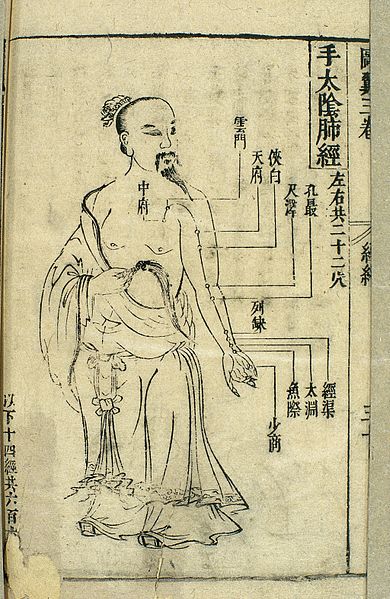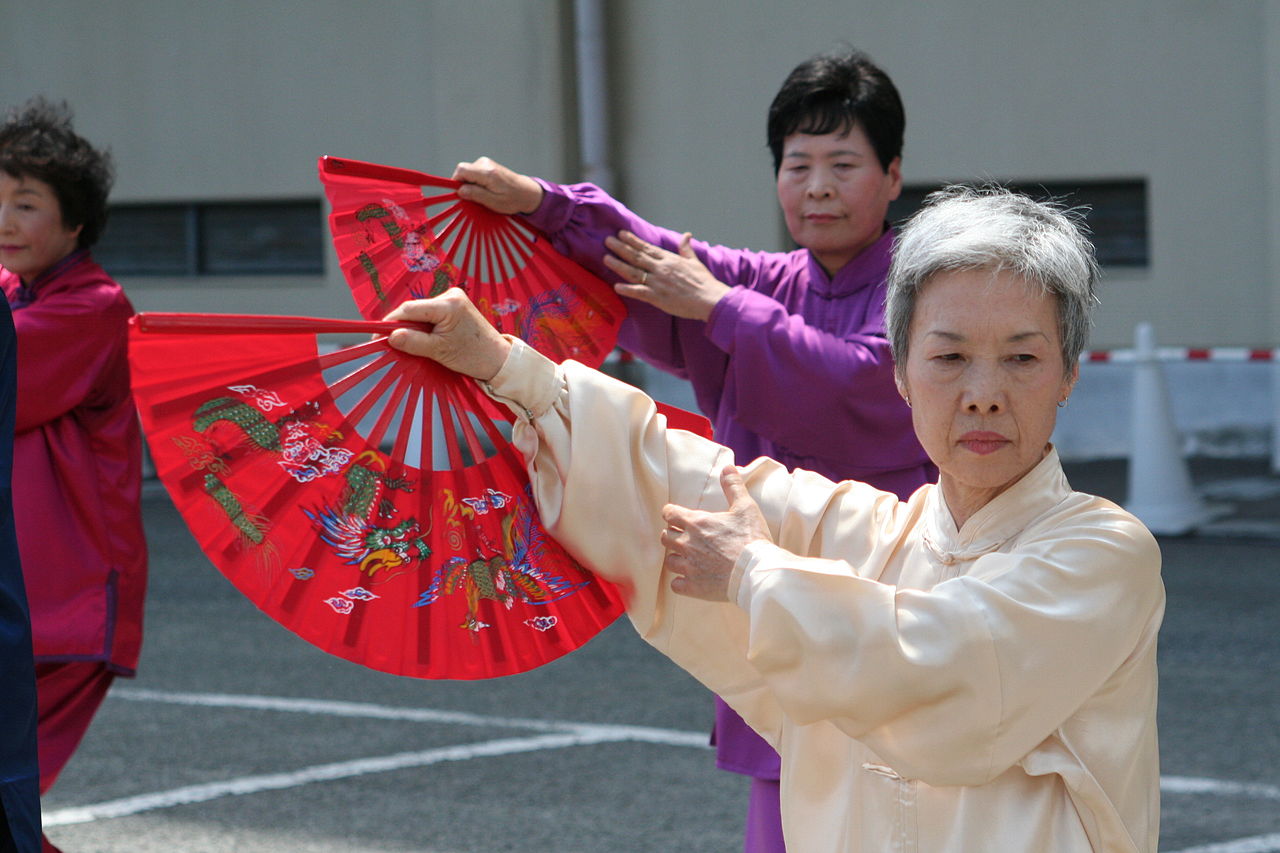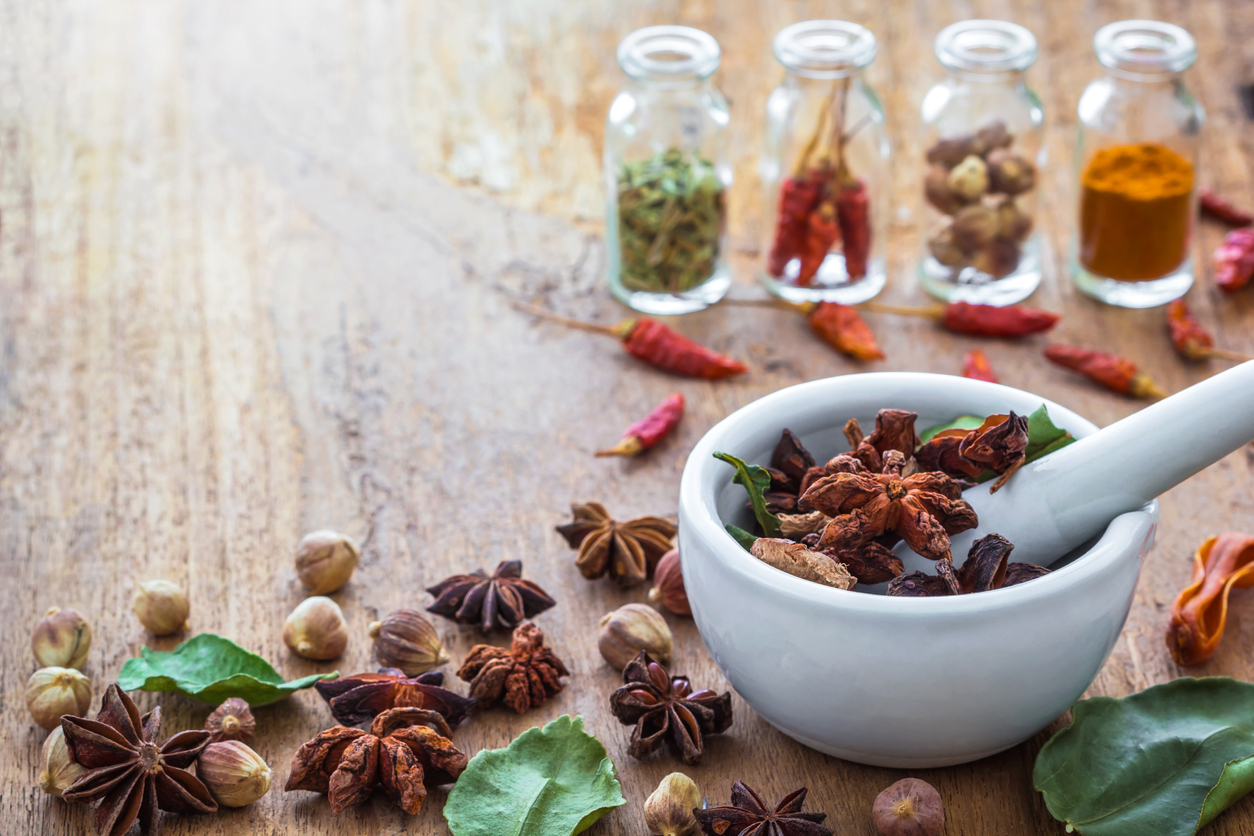Humans love to stress themselves out. There is a constant flow of news, social media, and everyday life stuff (oh you know, just like job and rent and stuff) that can lead to major burnout. In an effort to stay sane, many folks have delved into self-care.
What is self-care? It’s a deliberate effort to improve your physical, emotional, or spiritual health. And it’s different for everyone. Some of us like to go to yoga or for a long run, while others like going shopping to induce a little retail therapy.
Many folks have also turned to alternative, non-Western forms of healing, like Traditional Chinese Medicine.
Methods like skin cupping, acupuncture, and herbal teas are started to gain popularity in the Western world. Unlike splurging on that fifth drugstore face mask, these Traditional Chinese Medicine practices are great for your health. More and more in Western culture, Traditional Chinese Medicine (TCM) practices are making their way into daily routines.
What is Traditional Chinese Medicine?

Wellcome Images/Wikimedia Commons/CC BY 4.0
TCM is an ancient health system that dates back thousands of years, and is still very prevalent in China today. The Eastern style of healing can be used to fight disease, prevent it, and help improve your overall health.
There are dozens elements and it can be a bit confusing at first.
So we made a complete guide to get you started with Traditional Chinese Medicine – safely and effectively.
What Is Traditional Chinese Medicine Based On?

Wellcome Images/Wikimedia Commons, CC BY 4.0
At its core, the basic concept of Chinese medicine focuses on Qi.
Qi is the key force of life and surges through our bodies at all times.
Imbalances in Qi is what leads to disease, pain, and illness. Qi is also known as “vital energy.”
The forces that make up this force of life are a familiar concept – yin and yang.
If there is any outside forces that alter a persons yin or yang, their Qi is thrown off.
Think of it as that X factor that you can’t quite places your finger on.
Sometimes you feel off and don’t know why, now you do, it’s your Qi. Something is your life is “off” – and it may not even be something in your body – but it can still affect your health.
All humans and beings are connected.
According to ancient beliefs, all humans, animals, and plants are just a small part of the larger world, and in turn the universe. Being interconnected with nature it makes sense we fall pray to its surrounding forces.
Many cultures around the world acknowledge the unspoken connection between all living things.
The focus of TCM is to restore balance.
If someone isn’t connecting with nature, other humans, or the surrounding universe, it is likely a person will not feel right. These attempts to restore balance vary from practice to practice, and from ones individual needs.
In TCM, in order to restore balance in your body, the internal organs must be balanced key elements.

Donr484/Wikimedia Commons/Public Domain
These elements are earth, fire, metal, water, and wood. According to Active Herb, each of these elements “correlates to specific organs in the body, time of day, season, emotion, shape, animal, sense, color, etc.” You can see how each element in TCM affects each other in the above chart.
Types Of Traditional Chinese Medicine

iStock
There are eight main types of Chinese medicine. They range from physical movement practices, to ingesting herbs and supplements.
Each practice can be used to cure certain things.
Try to keep in mind what aspects of your health you would like to improve on, and find the option that works best for you. And as with any medical regimen, consult your doctor before trying anything new.
1. Acupuncture

iStock
One of the most popular trends to make its way to Western culture is acupuncture.
The practice involves inserting needles in the “superficial skin, subcutaneous tissue, and muscles” to manipulate them.
Studies show that this process stimulates natural painkillers in the body and aids the brain in processing pain.
It’s A LOT of needles.

Hua Shou/Wikimedia Commons/Public Domain
There are over 2,000 acupuncture points on the body which are connected to the 12 main “meridians.”
The meridians are responsible for conducting energy through the body and transferring Qi to the internal organs.
Acupuncture helps to balance yin and yang and restore body metal and physical health.
What is acupuncture used for?

Pixabay
Mainly acupuncture is used to treat chronic pain like back and neck pain, osteoarthritis, headaches, and carpal tunnel syndrome. It can also be used to stimulate blood flow in the body so it has started to become a popular way to naturally improve fertility in women.
If you’re thinking of trying this ancient practice make sure go to a trained acupuncturist.
After all, literally nothing sounds worse than being stabbed with thousands of needles in the wrong place.
2. Moxibustion

iStock
Falling into a similar vein of Chinese medicine is Moxibustion. The technique is typically used with the Chinese herb mugwort, or Artemisia Vulgaris,but other herbs can be used as well.
The herb is lit and used to heat specific acupuncture points.
The burning can invigorate the blood, which historically has been to cure menstrual pain, and improve the function of the kidneys.
3. Massage (Tui na)

Pixabay
Using a combination of massage and acupressure, Tui na helps to treat chronic pain and musculoskeletal conditions.
The practice has been used in China for centuries.
The massage can also include herbal compresses, heat, and ointments to fully heal the body. According to the Pacific College of Oriental Medicine, “The main benefit of tui na massage is that it focuses on the specific problem, whether it is an acute or a chronic pain associated with the joints, muscles or a skeletal system.”
Patients stay fully clothed.

iStock
If the idea of stripping down for a stranger to massage you gives you anxiety, tui na may be for you. Unlike other massage practices, clients stay completely clothed during a tui na massage.
The practitioner moves the body through poses.
Along with some acupressure and traditional massage techniques, the tui na masseuse also helps guide the client’s body into various healing poses.
Be careful though – the massage pressure can be intense.
We suggest being super clear with your practitioner about your pain threshold. Massages typically last between 30 minutes to an hour, so keep that in mind as well when considering your pain threshold.
4. Herbs

iStock
If you’re looking for a day to day practice that’s a little less physical, we’ve got you covered. Chinese herbs are easily the most non-committal form of TCM, and the most effective way to introduce it into your daily routine.
The herbs come from a variety of plant roots, leaves, and seeds.
The most commonly used are cinnamon, ginger, and ginseng.
Ginseng

안진수/Wikmedia Commons/CC BY 4.0
This Chinese Medicine herb is affiliated with the spleen, heart, and lung meridians. According to Me and Qi, ginseng is prescribed for a variety of ailments, including los of appetite, restlessness, weak pulse, and impotence.
Ginseng also helps rid the body of free radicals.
This Chinese herb has benefits outside of TCM, too. Studies show that it helps rid the body of free radicals and can even add a little pep to your step. This is why you always see it listed as an ingredient in energy drinks.
Ginger

MK2010/Wikimedia Commons/CC BY-SA 4.0
Ginger has a host of health benefits, both by TCM and Western medical standards. In TCM, Ginger is warm in nature, which means it is meant to get the blood pumping and give your organs some much-needed attention.
Ginger can also help with things like nausea and might even act as a boost to your immune system.
Some studies even suggest that this root can help curb cancer cell growth, help lower blood sugar levels, and even helps alleviate nausea and morning sickness.
Cinnamon

Kjokkenutstyr/Wikimedia Commons/CC BY-SA 4.0
Like ginger, cinnamon is also considered a warm medicinal herb in Traditional Chinese Medicine. It is often used to help with back pain, knee weakness, and other ailments typically associated with the kidneys.
It’s also loaded with antioxidants.
According to Healthline, cinnamon is full of polyphenols, which have a slew of health benefits. The spice also has anti-inflammatory propreties and may even cut down the risk of heart disease in certain individuals.
Taking Chinese medicinal herbs can be super adaptable.

Pexels
Another nice thing about the herbal method is you can choose which way you prefer to ingest them.
They come in dozens of forms.

Pexels
You can get them in pill-form, teas, powders, and liquid extracts.
Personally, we love the tea option. Sitting down with a warm cup of tea is already calming, then add in extra healing powers? Win. Win.
5. Cupping

iStock
Cupping is an intense form of Chinese massage that uses glass or plastic cups and the power of suction. During the process, cotton is set on fire and placed inside the cups. The oxygen is sucked out and then the air in the cup cools creating a vacuum of pressure.
It’s not the comfiest practice.
This method is usually only done of fleshier parts of the skin like the leg or back. The cup can also be used for scraping which moves the pressured cup around the muscle.
It will give you marks.

Fernando Frazao/Agencia Brasil/Wikimedia Commons/CC BY 3.0
In 2016, the whole world was intrigued by the round marks on the backs of many of the Olympic athletes, including swimmer Michael Phelps. Turns out they were using the cupping method to properly prep for the global event.
This method does wonders to work out sore muscles.
Admittedly we were a bit wary at first – but the end results were amazing. Just make sure to give a few days before big events since bruising is likely around the cupped area.
Cupping is used for a variety of other ailments.

(Anna Frodesiak/Wikimedia Commons/CC0)
According to Dr. Robert Shemerling, the facultry editor at Harvard Health Publishing, cupping has been used for skin issues like hives and acne, helping boost immunity, and even lowering cholesterol.
6. Tai Chi

Songmy/Wikimedia Commons/CC BY 2.5 cn
Tai Chi, also referred to as shadow boxing, is a form of Traditional Chinese Medicine that is more of a physical practice. It is commonly called “meditation in motion.”
Much like yoga or meditation, it can do wonders for your mind and body.
It originated as an offshoot of martial arts but quickly was recognized for its healing properties. It is a low-impact, slow exercise, so nearly anyone can take it on.
Each motion is named after an animal or boxing stance.

Corpse Reviver/Wikimedia Commons/CC BY-SA 3.0
Some of the movement names include “Grasp the bird’s tail” and “Parting the wild horse’s mane three times.” Of course, it doesn’t matter what you call the movements, as long as you are practicing them correctly.
Once again, it’s all about balance.
The first written version of Tai Chi was found in the Book of Changes, which was written over three thousand years ago during the Zhou Dynasty. In the book, it says that “in all changes exists Tai Chi, which causes the two opposites in everything.”
Tai Chi movements are opposites of each other.
They are meant not to cancel each other out, but rather to complement each other. So you may do a slower movement, associated with feminine yin energy, and then follow it quickly with a fast, forceful movement, which is associated with masculine yang energy.
7. Meditation

Oluremi Adebayo/Pexels
More and more Western doctors are doing what TCM pratitioners have done for quite some time: prescribing meditation to their patients.
Meditation is the cornerstone of many self-care practices.
And it makes sense as to why. The benefits of meditation are numerous (and backed by science): it reduces stress, enhances self-awareness, and it can even help you lengthen your attention span.
But how do you meditate?

https://www.pexels.com/photo/woman-meditating-in-the-outdoors-2908175/
There are hundreds of different schools and types of meditation, and it can be overwhelming to find one that is right for you. At its core, however, meditation is a simple concept: you are giving all of your attention to the present moment.
Here’s a simple way to start meditating.
Dr. Fred Russo, a TCM practitioner, says you should “focus on your breath as it flows in and out on its own. I encourage you to close your eyes to minimize distractions.”
You need to visual the breath.

terimakashi0/Pixabay
“Feel your breath as it enters your nostrils, fills your lungs, and then again as it leaves your body.”
“Simply notice the physical sensations of breathing,” Dr. Russo explains.
It’s easier said than done, but with practice, you will start to see the benefits of meditation. And you don’t need to do it anywhere fancy, either. Any quiet place where you will not be interrupted works.
8. Feng Shui

iStock
Although this isn’t a medicinal practice, many who use Traditional Chinese Medicine also practice Feng Shui. This is the art of organizing a space, like your office or home, in a way that allows for proper energy flow.
According to Pacific College, we spend 80% of our time indoors.
This is why it is so vital to make a space that allows for a healthy lifestyle. When a place has good Feng Shui, you tend to feel more connected to the space, keeping us present.
Is Traditional Chinese Medicine Safe?

kian2018/Pixabay
The good news is that most experts agree that TCM is genuinely very safe.
However, that comes with the caveat of going to a person is trained in what they are doing.
If you are thinking of trying any of these methods, take some time and do your research to find a practitioner who fits best with your goals.
Does TCM work?
While these ancient practices haven’t been studied or approved by the FDA, or other Western pharmaceutical groups, they have been used in Eastern cultures for thousands of years.
They’ve been on the map long before aspirin was even a concept.
So chances are it stuck around for a reason. Also, since TCM is expanding globally many doctors are starting to study its effects further and they show a lot of promise.
Sign us up.
Personally, we love lots of these practices, and have started to incorporate them into our health routines. And honestly, we’re becoming a bit obsessed.
We feel healthier and more grounded.
And whether or not its our QI, or our brains playing tricks on us, we’ve never felt better.

